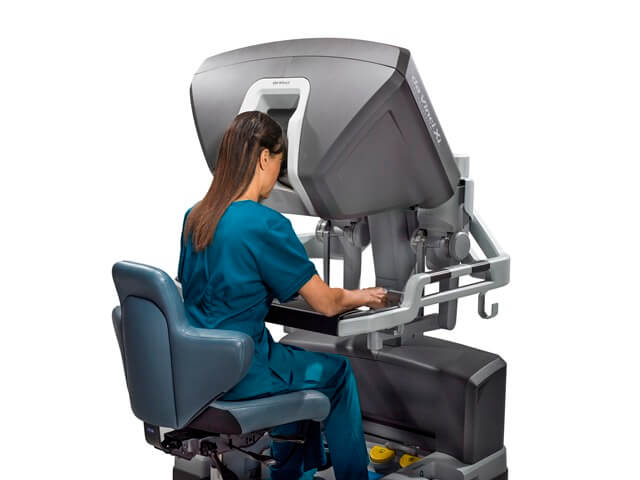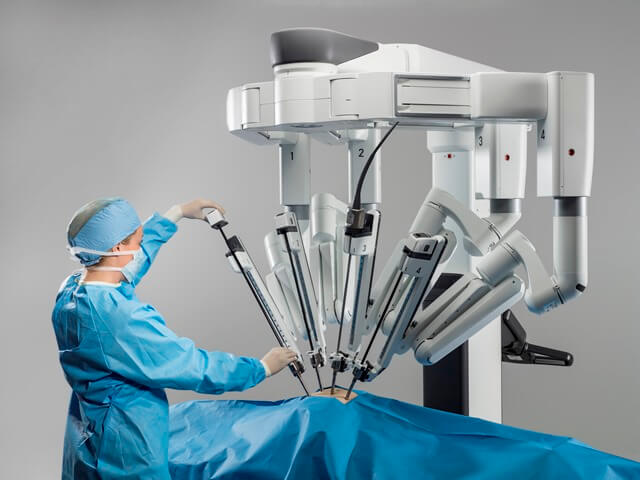
If you or a loved one has been diagnosed with a condition that may require surgery, you owe it to yourself to learn about all of your medical options, including the most effective, least invasive surgical treatments available.

- Significantly less pain
- Less blood loss
- Less scarring
- Shorter recovery time
- A faster return to normal daily activities
- And in many cases, better clinical outcomes.
Robotically assisted surgery is often used for colorectal procedures, pancreatic conditions (such as Distal Pancreatectomy), achalasia and other esophageal procedures (such as Heller Myotomy), gynecological surgeries (such as hysterectomy) and for gallbladder conditions (such as a Cholecystectomy).

The system is a sophisticated robotic platform designed to expand the surgeon's capabilities and offer a minimally invasive option for major surgery. Small incisions are used to introduce miniaturized wristed instruments and a high-definition 3D camera. Seated comfortably at the da Vinci console, your surgeon views a magnified, high-resolution 3D image of the surgical site. At the same time, state-of-the-art robotic and computer technologies scale, filter and seamlessly translate your surgeon's hand movements into precise micro-movements of the instruments.
The system cannot be programmed, nor can it make decisions on its own. Rather, it requires that every surgical maneuver be performed with direct input from your surgeon.
